Sunday afternoon on Facebook, my friend Frank Hablawi shared a fan theory about the Series 4 finale of Sherlock. Basically, the theory was that Sherlock had spent all or most of S4 inside of his Mind Palace.
I hated this idea, mainly because “It was all a dream” is one of the lamest ways to end a story imaginable. And besides, Sherlock has gone to that well once before. Two dream endings in one series would really be pushing it.
Now, I’m kind of wishing that they went with it.
SPOILERS for “The Final Problem” after the picture.
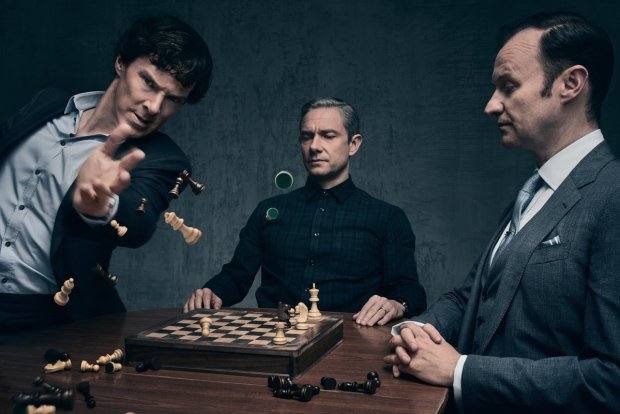
That was… REALLY bad.
While Sherlock has been no stranger to underwhelming episodes before (I’m looking at you, “Blind Banker” and “Hounds of Baskerville”), even those shows had their moments. But “The Final Problem” is, in my opinion, the first episode of Sherlock to have practically no redeeming features whatsoever.
Briefly, last week concluded with the revelation that Sherlock and Mycroft had a secret sister, Eurus Holmes, who was plotting against her brothers. She revealed her identity and shot John in the final seconds of “The Lying Detective.” And, true to Sherlock form, the show quickly shrugs off this cliffhanger and moves on to other things (It was just a tranquilizer dart, you guys!). We find out that Mycroft has been concealing the existence of Eurus from Sherlock for most of his brother’s life, and that she’s incurably insane and been locked away in a secret island facility called Sherrinford since childhood. (Really, does it get any more fan-fiction-y than “Sherlock and Mycroft have a secret sister who’s smarter than both of them and EEEEVIL”?) Watson and the Holmes brothers quickly make their way out to Sherrinford to confront Eurus and figure out how she’s been breaking out of the facility.
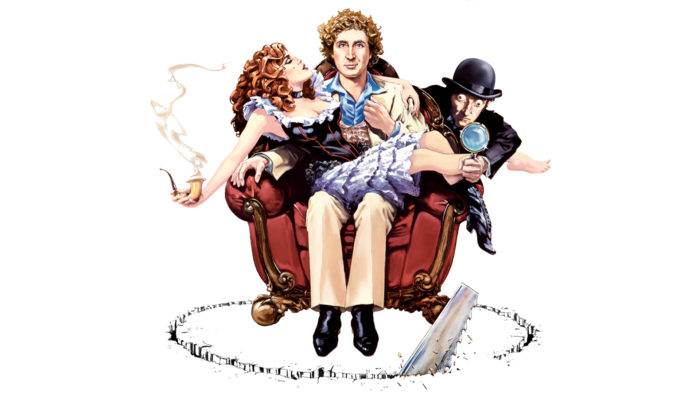
Eurus, naturally, is sitting pretty in a glass cell, just like all the criminal masterminds in The Dark Knight, The Avengers, Skyfall, and a billion other things you’ve seen since The Silence of the Lambs. And because she’s so super-smart & everything, she plays mind games with everyone who crosses her path. Seriously, can we just retire this trope already? Any freshness it once had has long since been played out in the 26 years since Silence. Find something else for your fearsome villains to do, please.
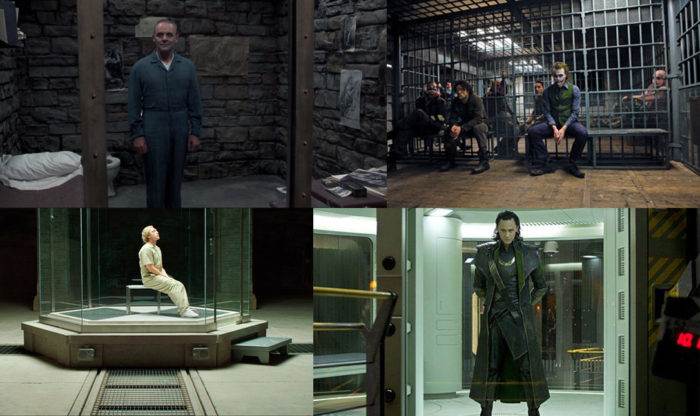
Among the people Eurus has played mind games with is Mycroft Holmes himself. If you thought that Mycroft was dumb in S2’s “The Reichenbach Fall,” spilling secrets about Sherlock to Moriarty, well, you ain’t seen nothing yet. It’s revealed that five years ago, Mycroft gave his psycho sister a Christmas present: Five minutes of unsupervised conversation with Jim Moriarty (For the smartest man in England, Mycroft sure can be stupid sometimes).
Sherlock, John, and Mycroft spend most of the rest of “The Final Problem” running around the Sherrinford facility, solving riddles Eurus poses like they’re in a road company version of Die Hard With A Vengeance.
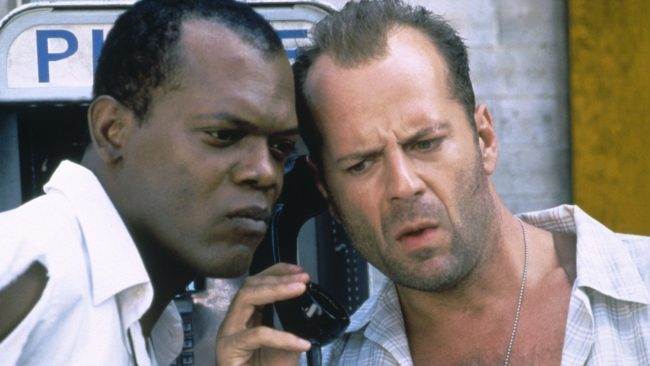
Andrew Scott is largely wasted as Jim Moriarty, reduced to making taunting sounds on video screens while Watson and the Holmes boys race to solve the riddles. The director of the Sherrinford facility and his wife are both killed through Eurus’ manipulations, but since we barely know either character, their deaths don’t have much resonance. Oh, and for some extra unpleasantness, Eurus forces Sherlock to play mind games with poor Molly Hooper’s affections. Yay.
And ultimately we find out that Redbeard wasn’t Sherlock’s childhood dog, but Sherlock’s childhood playmate that Eurus killed because she’s just so EEEEEVIL, you guys. It’s a revelation that worked a lot better in the final episode of M*A*S*H.

If you’re thinking that none of this sounds like any story Arthur Conan Doyle ever wrote… Well, you’d be right.
Sherlock is at its best when it’s finding new twists to put on Doyle, and at its worst when it goes off in random directions. Last night’s episode was an example of the latter, and it was a pretty horrible way to end out the season. I’m hoping that Series 5, whenever it comes, finds a way to bounce back from this mess.
The Canon (and Non-Canon) References
-Let’s get the obvious one out of the way first: The title “The Final Problem” is drawn from the Conan Doyle story of the same name, which this episode has almost nothing to do with. “The Final Problem” was intended to be the last Sherlock Holmes story ever written, where Doyle introduced Professor Moriarty to the world and killed off Sherlock Holmes, he thought for good. But Doyle wrote a new Holmes story just eight years later, and two years after that, he finally caved to public pressure and brought the Great Detective back to life in the 1903 story “The Empty House.”
-The name of Sherlock and Mycroft’s secret sister, Eurus (Greek for “The God of the East Wind”), is drawn from a passage in “His Last Bow,” a Doyle story published in September 1917. The story is set on the eve of World War I, as a 60-year-old Holmes performs one last service to England. It ends on this inspiring and patriotic passage, as Holmes says, “There’s an east wind coming, Watson.” Watson takes him literally, replying that it’s actually quite warm. Holmes responds:
“Good old Watson! You are the one fixed point in a changing age. There’s an east wind coming all the same, such a wind as never blew on England yet. It will be cold and bitter, Watson, and a good many of us may wither before its blast. But it’s God’s own wind none the less, and a cleaner, better, stronger land will lie in the sunshine when the storm has cleared.”
You might also recall the dialogue about “an East Wind coming” in “His Last Vow,” the Series 3 finale.

-The drone bomb at Baker Street recalls a passage in the original “Final Problem,” where Professor Moriarty’s men torch Holmes and Watson’s rooms while they’re out. Holmes breaks the news to Watson as they’re on a train escaping to the continent:
“Have you seen the morning paper, Watson?”
“No.”
“You haven’t seen about Baker Street, then?”
“Baker Street?”
“They set fire to our rooms last night. No great harm was done.”
“Good heavens, Holmes! This is intolerable.”
And, considering the repair & reconstruction of 221B that we see at the end of the episode, it seems that the same was the case here.

-That shot of John and Sherlock flying away from the explosion in the trailer looked so cheesy, I was convinced that it was going to be part of some over-the-top dream sequence. I was severely disappointed to find out it was meant to be serious. And apparently, John, Sherlock, and Mycroft all have the ability to survive explosions and one-story falls without injury now. With this kind of invulnerability at their disposal, maybe John and Sherlock can join the Avengers next.
-The last name “Garrideb” is drawn from the Doyle story “The Three Garridebs.” And the shot of the three Garrideb brothers dangling outside a window at Sherrinford gives the explosion shot a run for its money when it comes to sheer cheesiness.
-The name of Musgrave Hall, the Holmes ancestral home, comes from “The Musgrave Ritual,” a Doyle story about an early case of Holmes’ from before he met Watson, where he’s hired by Reginald Musgrave, an old college acquaintance.
-The true name of “Redbeard,” Sherlock’s childhood friend, is Victor Trevor, who Holmes describes as the one friend he made at college in the Doyle story “The Gloria Scott.”
I’ll confess that when they first showed that Redbeard was a little boy instead of a dog, I momentarily thought that they were going to introduce a fourth Holmes sibling, because frankly, I wouldn’t put it past the show at that point.
…And Eurus referred to the kid as “Drowned Redbeard” and no one in the family full of geniuses thought to look for him in the local well? Really?
-Lestrade saying that Sherlock isn’t just a great man, but a good one, is a callback to an exchange he had with John in “A Study in Pink.”
-It’s nice that Sherlock has finally, positively remembered that Lestrade’s first name is “Greg.” I’m a bit disappointed that Detective Inspector Hopkins never made a return appearance this season, though. It seemed like “The Six Thatchers” was setting up more with her.
-Towards the very end, we see that Mary Watson made yet another secret video with a “P.S.” for John and Sherlock to view after her death. Is this what we’re supposed to be doing instead of wills now? It’s a wonder that Mary ever had any time to be an assassin, what with all the pre-post-mortem videos she had to make.
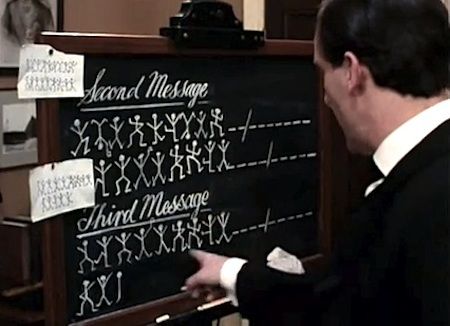
-The cypher that we see John and Sherlock trying to solve in the closing montage is “The Dancing Men,” a secret code from the Doyle story of the same name.
-“The best and wisest men I have ever known” is also a quote from the closing lines of Doyle’s “The Final Problem.”
-“My Baker Street Boys” is likely a reference to The Baker Street Boys, a series about Holmes’ street urchin assistants, the Baker Street Irregulars, that ran on the BBC in 1983.
-Mary also refers to them as “Sherlock Holmes and Doctor Watson” at the end of her video. Damn, you don’t even give your own husband top billing? That is cold, Mary. Ice cold.
-The building that Holmes and Watson charge out of in the final seconds of the episode is marked “Rathbone Place,” a tribute to Basil Rathbone, widely considered one of the definitive Sherlock Holmes actors.
-The running at the very end, while a very cool shot on its own, unfortunately didn’t work for me, as it made me immediately flash on this:
The HORROR.
-The end credits for Sherlock once again featured a secret message with letters highlighted in red. The message in this episode was: “A NEMO I,” which tied in with the “Nemo Holmes” gravestone seen the flashbacks. The meaning behind this name should come as no great shock to anyone familiar with Captain Nemo from 20,000 Leagues Under the Sea.
“The Final Problem” is running on big screens across the U.S. on January 16th and 18th, along with a 15-minute bonus featurette with Amanda Abbington discussing her time on the show. I was thinking about going, but considering how disappointed I was with this episode overall, I can’t imagine plunking down money for it right now. If you’re interested, you can get tickets and more info here.
But don’t say I didn’t warn you.
My Sherlock Holmes month continues next week, as I discuss… “The Watson Problem.” See you then.

Oh, and BTW, I couldn’t link to it in the first few lines of the piece, but here’s the column my friend Frank Hablawi wrote that I referred to above:
http://non-productive.com/unnerving-theories-for-sherlock-season-4/
Hello, Mr Trumbull. I would largely agree with you about The Final Problem although I can’t pretend to be as surprised as you appear to be by the shonky and overdone (and *under*done!) nature of this possible series finale. Moffat/Gatiss do tend to get a little carried away, a little egodrunk especially with legions of fans creaming themselves over even the most embarrassing elements of Sherlock (in today’s hyperaccelerated world it is now more than ever sometimes a case of “scratch a fan, find an idiot”). The introduction of an evil genius Holmes sister got an “Oh, come on!” from me last week (although I liked the reveal prior to the revelation of who she was supposed to be) and I was hoping for a recontextualizing twist, alas this was not to be and I got something *worse* than even I was dreading. Ye Gods! A needless secret origin for Holmes linked to his once-in-a-lifetime supergenius of a sister with the ridiculous strained His Last Bow-referencing name. Painful! As for the direction, doubtless there are quite a few cineilliterate chimps who will praise the “cinematic” quality of TFP but the Sherlock gimmicks were particularly tired in the episode when they weren’t gratingly absurd. You, sir, are exactly right in your condemnation of the terrifyingly ridiculous CGI explode ‘n’ jump, such a witless cliché belongs in a Michael Bay farrago not here (both the concept and the execution were…forehead-slappingly poor) whilst I laughed aloud to read your reaction to Holmes and Watson’s gloriously silly run toward camera at the end, that was SO Batman and Robin! Altho’ I was thinking of the animated credits to the Sixties Batman tv series rather than Schumacher’s poopchild! You just know it will have wrangled the desired pant-wetting Pavlovian reaction from a particular sort of fan… Hah!
Eurus was most reminiscent of the early 1970s version of Doctor Who villain The Master, not surprising from Moffat and Gatiss (whose acting was variable as usual, imagine Mycroft by a *good* actor!) but pretty egregious, particularly as the concept of the villain incarcerated in an island prison complex secretly in control thanks to mind-controlling abilities is swiped from the 1972 Who story The Sea Devils. So, there’s *that* and the played out Silence Of The Lambs/Dark Knight/Skyfall notion too. Embarrassing. Sian Brooke was quite good as Eurus (and she has lovely eyes. Oops!) but the whole conception of the character was cringe-making. As for the ending with poor widdle psychotic Eurus just wanting Sherlock to be her friend… Yeuch. Puts her murderin’ ways in perspective, no? Um. NO! At least played that idea as part-joke with the mental but sexy Michelle Gomez version of the Master, here it was awful and designed to appeal to a specific kind of half-bright Sherlock fan; the unearned and illogical pseudo-emotion was problematic. Altho’ the sequence of Ring-girl resembling Eurus duetting with Holmes was sweet.
Oh, and both Andrew Scott and the Moffat/Gatiss panto incarnation of Moriarty were as usual dreadful and annoying. There’s an Anglo-Saxon phrase that usefully describes the Scott-Moriarty conception: Bollocks! *hoots*
As usual there were some things to enjoy, Cumberbatch/Cabbagepatch was on his game, Freeman wasn’t bad, there were some nice lines and shots while Una Stubbs and Louise Brearley (sp.?) were swell but all in all The Final Problem featured far more of Sherlock’s flaws than its strengths. Certainly, there’s something deeply conservative in the attempts to explain and normalize Holmes (and as for the twerps who treated Amanda Abbington’s Mary as if she were the best-conceived, best-acted, most exciting character ever… Bwahahaha!). Disappointing.
Nice review and spleen-venting, John.
Call me John, please. “Mr. Trumbull” makes me feel like I’m about to be rejected for a bank loan. 🙂
I know that Moffat and Gatiss have written a lot of DOCTOR WHO, but I’ve never followed that show in a big way, so most DW references are going to go right over my head.
I intentionally didn’t comment much on the secret Holmes sister thing last week, partly because I didn’t know where they were going with it, and partly because I was a bit gun-shy about speculating after I was so wrong on the Bus Woman. But now that I know what they did with the idea, I can officially declare myself not a fan of the concept, partly because it’s a big break from the Holmes Canon, and partly because the character dilutes Sherlock Holmes.
I’d also like to see Mycroft de-emphasized a bit more in future seasons. He’s a spice, not the main dish.
John – I am pleased to read someone else come upon the same conclusions about this episode as I did! It feels vindicating in the most pointless of ways – like all good geek victories do!
Thanks for the shout-out!
It just makes me wonder if there is anyone who will stand up to Moffat and say, “Loves saves the day, again?? Really?? And we have a little girl, again? Really?? And the little kid was one of the adult character, again?” I guess we should be happy that there wasn’t something involving looking or not looking or something.
I am happy to see someone call out the MASH ending. When they introduced the Redbeard mcguffin I originally though, “well, of course it isn’t actually a dog.” But thought that was way too obvious and derivative. But they did it anyway.